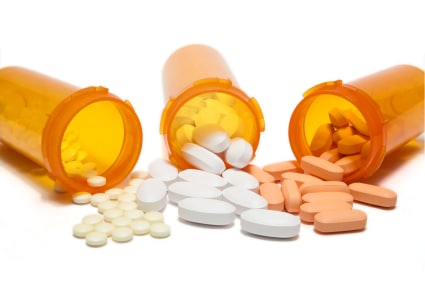 Drug Effectiveness: What Does it Mean?
Drug Effectiveness: What Does it Mean?
Have you ever wondered what drug effectiveness means?
You probably take some level of comfort when you hear that a drug has been determined to be “safe” and “effective” by the FDA. But, have you ever wondered how the FDA determines whether a drug is “effective”? You probably assume that the drug’s therapeutic effect is achieved in most individuals to whom it is prescribed – that the drug does what it’s claimed to do. But, that’s not what drug effectiveness means in the eyes of the FDA.
Drug effectiveness simply means a drug works better than a placebo. If a drug works better than a placebo either at treating or preventing a condition, and is determined to also be safe, the FDA approves it.
This means there is the possibility that a drug many not work in the vast majority of the patients to whom it is prescribed even though it obtained FDA approval.
Now a placebo is not expected to work at all. So besting a placebo in a drug trial seems to be a low hurdle to meet in our opinion
Let me explain.
Number Needed to Treat
One way to put into perspective how well a drug works is by its “number to treat”. The number needed to treat is the number of patients that must take a drug for one person to receive the intended benefit of the drug.
The lower the number needed to treat, the more effective the drug. A number to treat of 2 means that 2 patients must take a drug for one person to benefit from it. A number needed to treat 20 means that 20 patients must take medication for one patient to benefit from it.
To put this into perspective the number needed to treat must be less than 2 before the odds of a drug doing what it claims to do bests the odds of flipping a coin. The number needed to treat also has to be lower than 50 before a drug beats the odds of you picking a winning lottery ticket.
The number needed to treat is affected by the length of time a drug is taken and by the amount of risk, a population has for a particular disease. The longer a drug is taken, the lower the number needed to treat becomes. And when it comes to prevention of a disease, the more risk factors for a disease, the lower the number needed to treat becomes essential.
Thus, the most effective drugs have a low number needed to treat value. It is not uncommon, however, for many FDA-approved drugs to have numbers to treat above 20. This means that 20 patients must take the drug for one patient to benefit from it.
Let’s now take a look at the number to treat for some of today’s more commonly prescribed drugs – SSRI antidepressants and cholesterol-lowering statins.
SSRI Antidepressants
What is the drug effectiveness of antidepressants?
According to the Cochrane Briefs, most trials on antidepressants are four to six weeks long and rarely over 24 weeks long. Yet, many take SSRIs for prolonged periods sometimes exceeding 10 years. The number needed to treat in those short-term trials is seven. This means that seven individuals have to take the antidepressant for one person to have an adequate improvement in his or her depression. Six out of seven will not get any therapeutic benefit, and more than likely will experience at least one side effect.
Statins
What is the drug effectiveness of cholesterol medications?
Statins are drugs used to lower cholesterol. Lipitor is a statin and is currently the number-one-selling drug of all time. In the study submitted for FDA approval, Lipitor had a number to treat of 100. Yet, it claims to reduce heart attacks by 36%. How can that be? Here’s how. The Lipitor study was three and a half years long.
For every 100 people given a placebo, 3 had a heart attack during those three and a half years. For every 100 people who received Lipitor during that same time frame, 2 had a heart attack. (So Lipitor worked better than a placebo). So yes, Pfizer is truthful when it says Lipitor reduces heart attacks by 36% (from 3 to 2 per hundred treated).
What isn’t shared with the public is that 100 individuals had to take Lipitor for three and a half years to prevent one heart attack – thus the number needed to treat of 100. Now as time goes on the number needed to treat gets lower and lower, but even after 30 years of ongoing use the number to treat for statins is projected to be around seven. A vast majority of patients will take this class of drugs indefinitely and will not receive any therapeutic benefit.
SSRIs were initially intended for those with severe depression, and statins for those who already had a heart attack. And, in those populations, these two drugs are more effective. In general, the lower your risk for a given disease, or the less of a disease you have, the less effective is a drug.
The routine use of drugs for the long-term management of a disease for lower-risk patients requires needees a healthy discussion between patients and doctor regarding the number to treat and the risks and benefits of the drug. Taking a drug with a high number to treat isn’t necessarily unwise if it costs a few pennies a day and has few or mild side effects.
Knowing what drug effectiveness means will better prepare you to know questions to ask when your physician recommends placing you on a drug long-term for a chronic condition.
